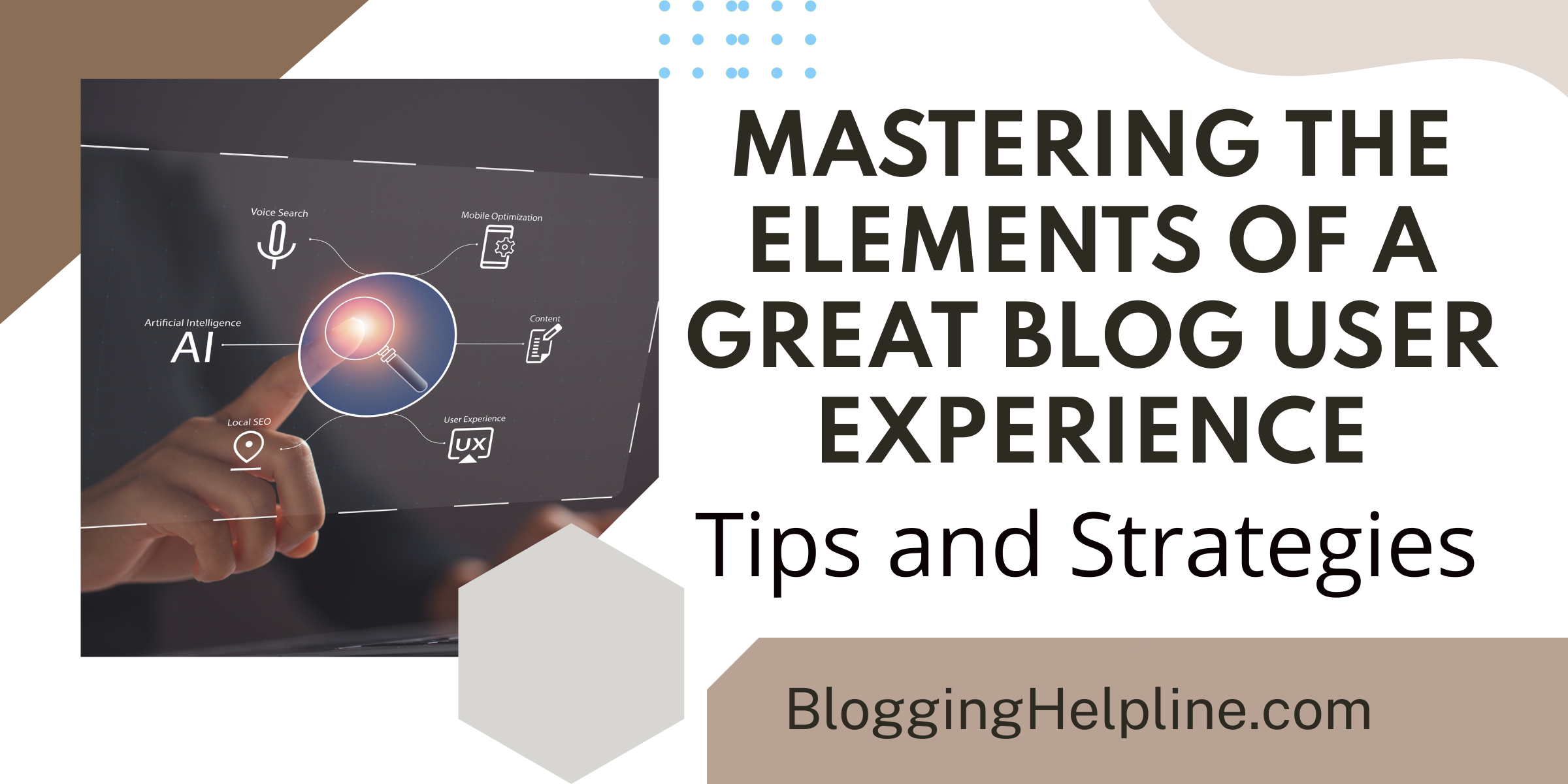Table of Contents
Introduction
Creating a successful blog user experience is essential for any blogger who wants to attract and retain readers. Your blog should be easy to navigate, visually appealing, and offer engaging content that keeps readers coming back for more. In this article, we’ll examine the key elements of a great blog user experience and provide tips on how to implement them effectively.
Know Your Audience
The first step in creating a great blog user experience is to understand your audience. Who are they, what do they want, and what problems can you help them solve? This information will guide your content creation and help you tailor your blog design to appeal to your target audience.
To better understand your audience, consider conducting a survey or focus group to gather feedback on what your readers are looking for in a blog. You can also use analytics tools to track user behavior and adjust your blog content and design accordingly.
Design Elements
The design of your blog is a critical aspect of the user experience – it should be visually appealing, easy to navigate, and optimized for both desktop and mobile devices. Here are some key design elements to consider:
Layout
Your blog layout should be clean, simple, and easy to navigate. Content should be organized logically, with clear headings and a consistent structure across all pages.
Color Scheme
The colors you choose for your blog can have a big impact on the user experience. Stick to a cohesive color palette that reflects your brand and creates a calming atmosphere for readers.
Typography
Choose fonts that are easy to read and complement your blog’s style. Use headings and subheadings to break up text and make it easier to scan.
Images and Videos
Visual elements like images and videos can make your blog more engaging and boost user experience. Use high-quality, relevant images and videos throughout your content.
Content Strategy
The heart of your blog user experience is your content – it must engage readers, answer their questions, and provide valuable insights. Here are some tips for creating a successful content strategy:
Define Your Niche
Your blog should focus on a specific niche or topic that resonates with your audience. This will help you create targeted content that speaks directly to their needs and interests.
Develop a Content Calendar
Planning out your content in advance can help you stay organized and create consistent, high-quality posts. Use a content calendar to schedule posts, brainstorm ideas, and track your progress.
Use Headlines and Subheadings
Headings and subheadings not only break up large blocks of text, but also make it easier for readers to find the information they’re looking for. Use clear, descriptive headings and subheadings that accurately reflect the content of your post.
Incorporate Keywords
Keywords are essential for boosting your blog’s visibility in search engines. Do some keyword research to identify the most relevant terms for your niche, and incorporate them naturally into your content.
Use Lists
Lists are a great way to organize information and make it easier for readers to scan. Use bulleted or numbered lists to break up text and highlight key points.
Engage With Your Audience
Engaging with your readers is crucial for building a strong blog community and fostering loyalty. Respond to comments, ask for feedback, and encourage readers to share their own experiences and opinions.
Technical Optimization
Finally, ensuring that your blog is technically optimized can improve the user experience and boost your search engine rankings. Here are some key technical elements to consider:
Responsive Design
Your blog should be optimized for all devices, including desktops, tablets, and smartphones. This ensures that readers can access and navigate your content no matter where they are.
Fast Loading Times
Slow loading times can frustrate and turn off readers. Use tools like Google PageSpeed Insights to test your site’s loading times and identify areas for improvement.
Clear Navigation
Your blog should have a clear, easy-to-use navigation menu that helps readers find what they’re looking for. Use a logical structure and clear labels for your menu items.
Search Engine Optimization
Optimizing your blog for search engines can help you attract more readers and improve your visibility online. Use on-page optimization techniques like incorporating keywords and meta descriptions, and focus on creating high-quality, shareable content.
Conclusion
Creating a great blog user experience requires careful planning and attention to detail across a wide range of elements. By focusing on your audience, design, content, and technical optimization, you can create a blog that engages and inspires readers and builds a loyal following over time. Remember to continually refine your approach and stay open to feedback and new ideas – the world of blogging is always evolving, and there’s always room for improvement.
